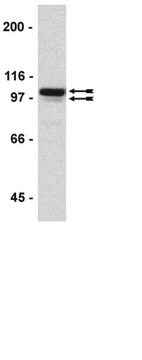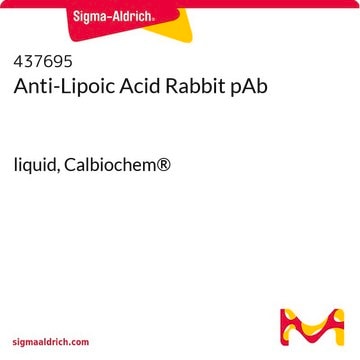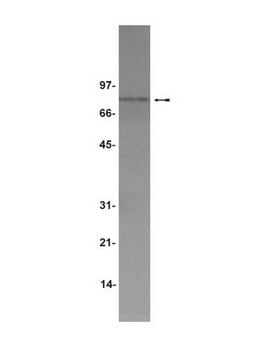07-645
Anti-Sp1 Antibody
Upstate®, from rabbit
Synonym(s):
Sp1 transcription factor, specificity protein 1
About This Item
Recommended Products
biological source
rabbit
Quality Level
antibody form
purified immunoglobulin
antibody product type
primary antibodies
clone
polyclonal
species reactivity
mouse, human, rat
packaging
antibody small pack of 25 μg
manufacturer/tradename
Upstate®
technique(s)
ChIP: suitable
electrophoretic mobility shift assay: suitable
immunofluorescence: suitable
immunoprecipitation (IP): suitable
western blot: suitable
isotype
IgG
NCBI accession no.
UniProt accession no.
shipped in
ambient
target post-translational modification
unmodified
Gene Information
human ... SP1(6667)
General description
Specificity
Immunogen
Application
4 µg of this lot immunoprecipitated Sp1 from 500 µg of HeLa nuclear extract.
NOTE: A previous lot successfully immunoprecipitated the α-1 subunit using the Catch and Release v2.0 Reversible Immunoprecipitation System (Catalog # 17-500). See manual for more information and protocol: www.millipore.com
Chromatin Immunoprecipitation:
Reported by an independent laboratory.
Immunofluorescence:
Reported by an independent laboratory.
Electrophoretic Mobility Shift Assay (EMSA):
1 µL of a previous lot of this antibody has been reported by an independent laboratory to supershift DNA complexes containing recombinant Sp1 and endogenous Sp1 from HeLa cells in EMSA.
Epigenetics & Nuclear Function
Transcription Factors
Quality
Western Blot Analysis:
1:500 dilution of this lot detected SP1 on 10 μg of HeLa lysates.
Target description
Linkage
Physical form
Storage and Stability
Analysis Note
Positive Antigen Control: Catalog #12-309, Hela cell nuclear extract. Add an equal volume of Laemmli reducing sample buffer to 10 μL of extract and boil for 5 minutes to reduce the preparation. Load 20 μg of reduced extract per lane for minigels.
Other Notes
Legal Information
Disclaimer
Not finding the right product?
Try our Product Selector Tool.
Storage Class Code
12 - Non Combustible Liquids
WGK
WGK 1
Flash Point(F)
Not applicable
Flash Point(C)
Not applicable
Certificates of Analysis (COA)
Search for Certificates of Analysis (COA) by entering the products Lot/Batch Number. Lot and Batch Numbers can be found on a product’s label following the words ‘Lot’ or ‘Batch’.
Already Own This Product?
Find documentation for the products that you have recently purchased in the Document Library.
Our team of scientists has experience in all areas of research including Life Science, Material Science, Chemical Synthesis, Chromatography, Analytical and many others.
Contact Technical Service








